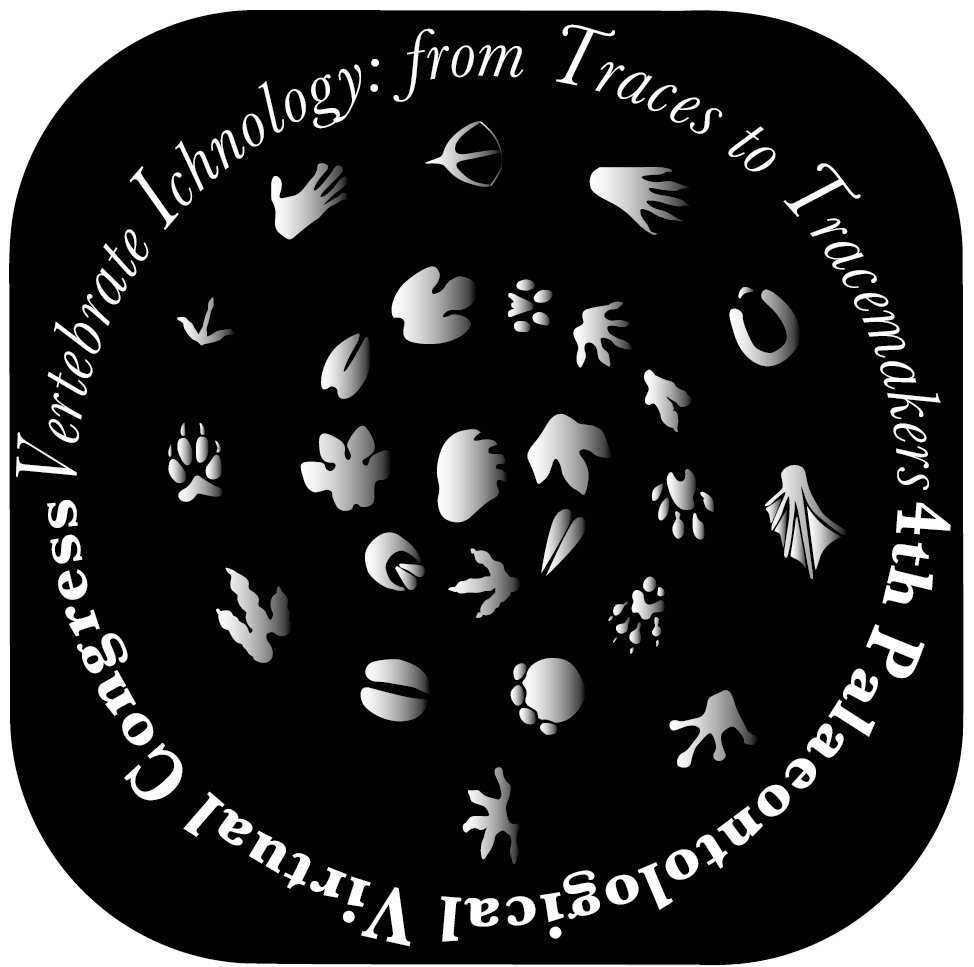Organisers: Ignacio Díaz-Martínez1, Lara Sciscio2,3, Silvina de Valais4, Miengah Abrahams5, Marco Romano6, Paolo Citton4
1 Department of Earth Sciences and Condensed Matter Physics, Faculty of Sciences, University of Cantabria, 39005 Santander, Cantabria, Spain
2 JURASSICA Museum, Porrentruy, Switzerland
3 Department of Geosciences, University of Fribourg, Fribourg, Switzerland
4 Instituto de Investigación en Paleobiología y Geología (IIPG), CONICET-UNRN, Avenida Roca 1242, General Roca 8332, Río Negro, Argentina
5 Department of Geological Sciences, University of Cape Town, Cape Town, South Africa
6 Dipartimento Di Scienze Della Terra, Università degli Studi di Roma “La Sapienza”, Rome, Italy

ABSTRACT:
Modern and ancient animal traces have long captured the imagination of scientists and non-scientists alike. Vertebrate trace fossils, e.g., footprints, burrows, scratch marks, and nests, among others, inform our understanding of different aspects of anatomy, function, locomotion, ethology, and ecology of their tracemakers. These may be complementary to and integrated with the body-fossil record and assist in shedding light onto macroevolutionary processes and community dynamics.
The study of vertebrate trace fossils has progressively required a multifaceted approach in order to extract reliable information from the ichnological record. In recent years and increasingly, vertebrate ichnology has become a multi-disciplinary and technology-enhanced field of investigation. The increasing focus on multifaceted and technologies-rich methodologies has led to the melding of diverse paleontological and geological fields, creating new fields, e.g. in comparative biology. These cutting-edge methodologies are available to answer different ichnological questions, ranging from the processes of trace formation and preservation to the paleobiology of producers. Continued advances in neoichnology directly assist in refining our understanding of how traces formed in different environments, by different animals, and how they can be used to interpret the vertebrate fossil record in a more dependable and parsimonious way. Paleobiological inferences are more difficult to achieve and depend on integrating external data from sedimentology, biostratigraphy, the osteological record, and the adopted epistemological approach to producer identification.
This Thematic Session is aimed at providing a critical roundup of different approaches and methodologies adopted in vertebrate ichnology to solve paleobiological issues in vertebrate evolution. Communications dealing with theoretical issues, analysis, and discussion of traces, tracemaker attribution, and other paleobiological aspects, in addition to adding to the discussion of classical and cutting-edge methodologies are welcome. Main topics may include, but are not limited to, approaches for producer identification, disparity in the ichnological record, producer behavior, paleobiogeography, comparison and integration with the body-fossil record, paleoecology, neoichnology, and evolution.
CONTRIBUTIONS:
Coming soon!
